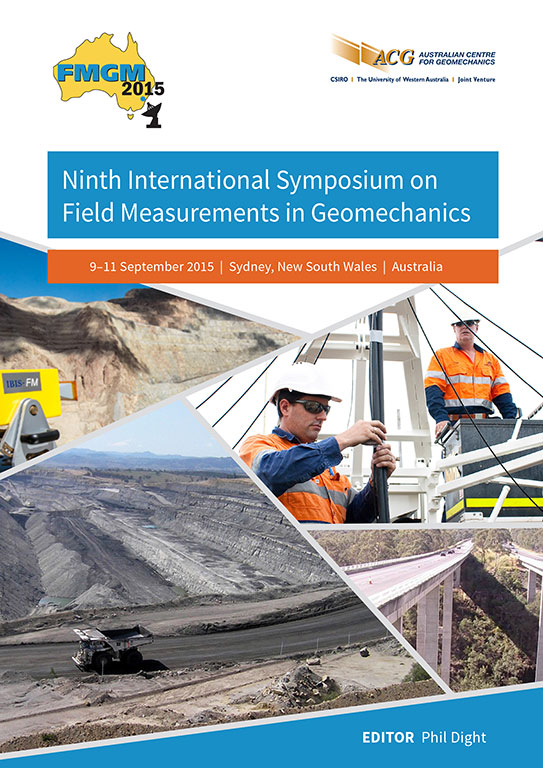Geotechnical monitoring of railway infrastructure subject to mine subsidence-induced horizontal closure

|
Authors: Steindler, A; Leventhal, A; Hull, T; Matheson, J; Sheppard, I |
DOI https://doi.org/10.36487/ACG_rep/1508_39_Leventhal
Cite As:
Steindler, A, Leventhal, A, Hull, T, Matheson, J & Sheppard, I 2015, 'Geotechnical monitoring of railway infrastructure subject to mine subsidence-induced horizontal closure', in PM Dight (ed.), FMGM 2015: Proceedings of the Ninth Symposium on Field Measurements in Geomechanics, Australian Centre for Geomechanics, Perth, pp. 565-580, https://doi.org/10.36487/ACG_rep/1508_39_Leventhal
Abstract:
Surface subsidence produced by longwall mining beneath mainline railways produces numerous technical challenges for the engineering profession, covering inter alia mine subsidence prediction, civil engineering management of the track, electronic remote monitoring of the rail, and management of rail infrastructure — all in the context of maintaining rail safety combined with efficient resource recovery. This is world leading practice. Near Tahmoor, NSW, longwall mining is being undertaken at a depth of cover of 440 m and subsidence of the Main Southern Railway of up to 0.9 m has occurred during multi-pass longwall panel retreats. This paper presents details of the monitoring of structural and geotechnically-based intervention measures to manage track safety without impeding mining operations. The methodology is illustrated by way of a case-history which deals with a structure that is a 100-year-old, inverted horseshoe shape, under-track, brick arch culvert of 4.5 m diameter, with shallow cover to the underside of the rail formation. The paper discusses the monitoring philosophy, measurement protocols, checks and balances, calibrations, and result interpretations. A particular challenge that will be addressed in the paper is discrimination of seasonal and diurnal effects from the mining-induced creek closure effects.
References:
Hull, T, Leventhal, A & Steindler, A 2012, ‘Seasonal impacts upon geotechnical structures’, Proceedings of the 11th Australia New Zealand Geomechanics Conference on Ground Engineering in a Changing World (ANZ 2012), Australian Geomechanics Society and the New Zealand Geotechnical Society, Barton, pp. 115-220.
Mine Subsidence Engineering Consultants 2008, Predictions of subsidence, upsidence and closure ground movements at the Myrtle Creek Railway Culvert due to the proposed mining of Longwalls 25 to 28, Report no. MSEC296, Rev. B, MSEC, Chatswood.
NSW Department of Mineral Resources 1999, Southern coalfields regional geology 1:100,000 map, edition 1, map, NSW Department of Mineral Resources, Sydney.
NSW Department of Mineral Resources 2003, EDG17 guideline for applications for subsidence management approvals, NSW Department of Mineral Resources, Sydney.
Pidgeon, AR, Barber, R, Christie, D, Kay, DJ, Robinson, GK, Sheppard, I & Sweeting, R 2011, ‘Management of the Main Southern Railway for subsidence impacts from longwall mining’, Proceedings of the Eighth Triennial Conference on Management of Subsidence, Mine Subsidence Technological Society, Pokolbin, pp. 231-245.
© Copyright 2026, Australian Centre for Geomechanics (ACG), The University of Western Australia. All rights reserved.
View copyright/legal information
Please direct any queries or error reports to repository-acg@uwa.edu.au
View copyright/legal information
Please direct any queries or error reports to repository-acg@uwa.edu.au